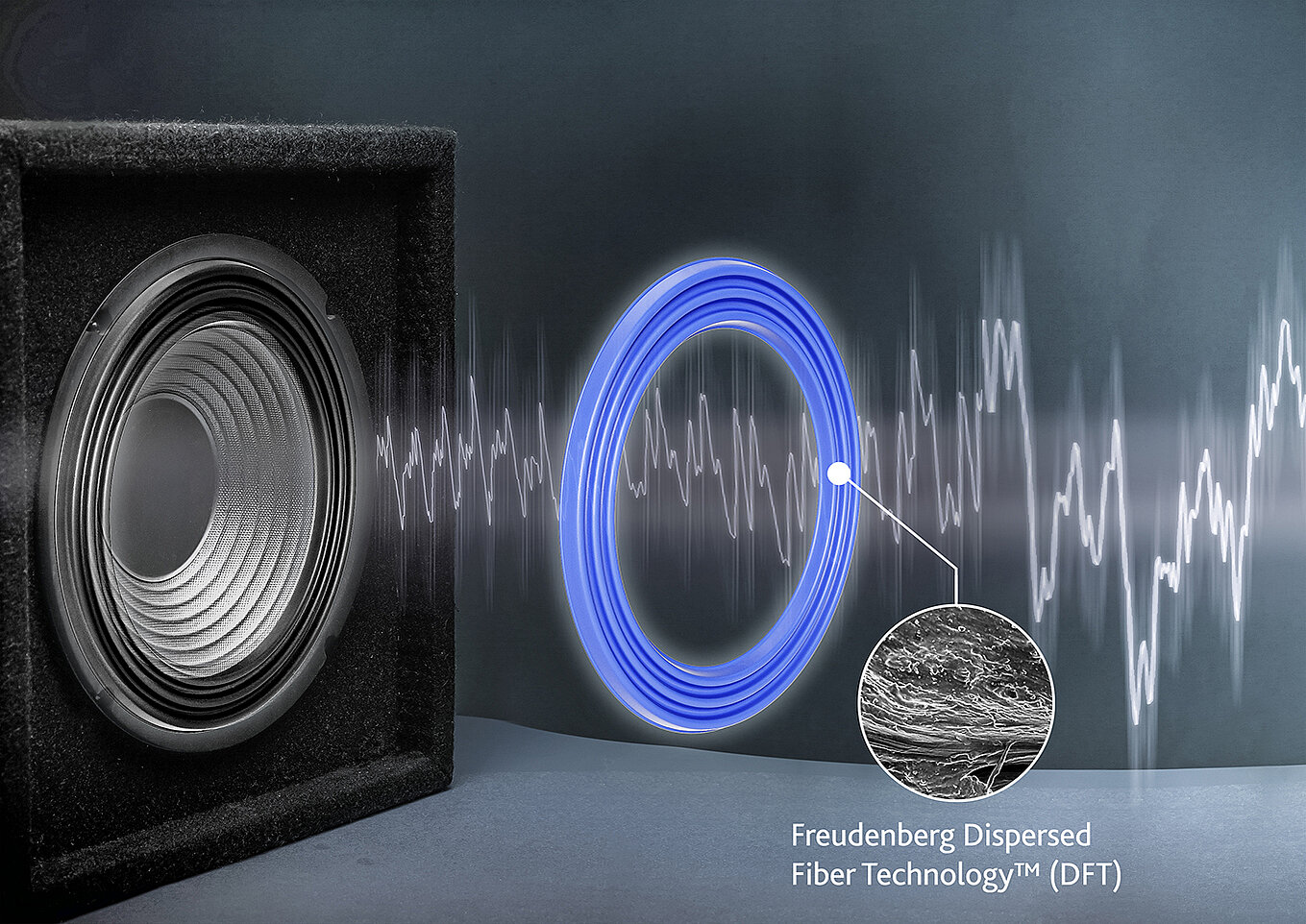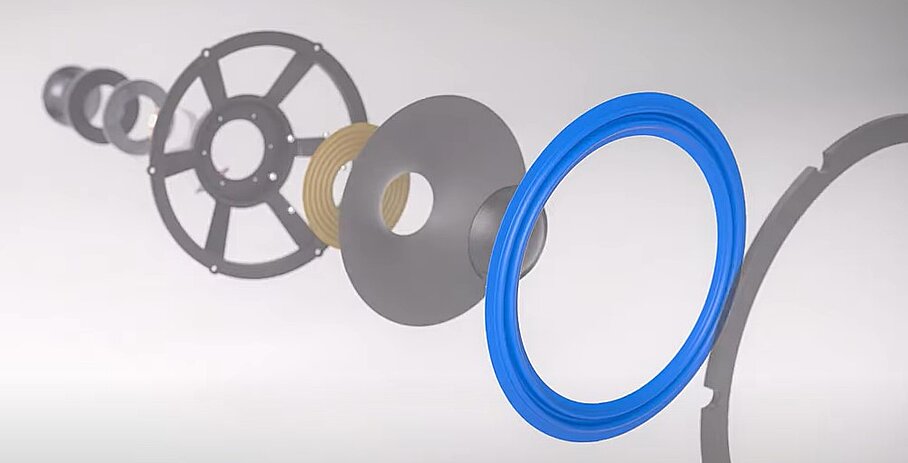Freudenberg takes sound quality to the next level
High-end sound systems have exacting demands. From stadium and theme park loudspeakers to car speakers and premium stereos, proprietary Dispersed Fiber Technology™ (DFT) from Freudenberg Sealing Technologies (FST) is bringing a new level of sound quality to speaker surrounds.
The quality of a speaker surround is especially important in premium sound systems, where precision sound is an essential aspect of an audiophile’s experience. The speaker surround holds the key to reducing strain, vibration, and distortion by securing the speaker components to the external cabinet and absorbing negative sound effects.
Freudenberg’s FST Business Group designs and tests DFT speaker surrounds for a wide range of audio manufacturers. At the company’s site in Blackburn (UK), DFT has so far been used in the manufacture gas meter diaphragms. But in the future, Freudenberg Sealing Technologies’ ambition is to play a leading role in the market for high-end audio systems.
Speaker surrounds molded using FSTs’ DFT provide various benefits. The speakers resist environmental influences and aging, they reduce strain on the material and reduce noise distortion in various tonal ranges. The speaker surrounds are uniquely tailored for the customer, from the drawing to full production.
No matter your taste in music – hip hop, opera, or the Rolling Stones – Freudenberg’s Dispersed Fiber Technology™ creates a very special sound experience.
Infobox:
Loudspeaker systems function by transforming electrical energy into mechanical energy, compressing the air, and converting the motion into sound energy or pressure that people can perceive. Most speakers are comprised of a variety of different components – including permanent magnets, voice coils and bobbins, suspensions (also called spiders), diaphragms or cones, dust caps, speaker baskets, surrounds, speaker terminals, and braided wires, which work together to produce sound. Although speaker design has improved significantly over the past 100 years, the fundamental mechanisms remained the same.
In music reproduction, a speaker driver or single speaker system acts as a transducer that amplifies electrical waves from a playback source and converts them into sound waves that can be perceived by people. This is achieved through a series of components that work together to create the sound. The magnet in a speaker driver produces an electric field around the voice coil that allows electromagnetic movement in the system. The voice coil assembly, a long bundle of tightly woven wires and a bobbin, is attached to the speaker cone and creates a magnetic field when electricity flows through it. The magnetic field causes the speaker diaphragm to vibrate, and the electrical energy is converted into mechanical energy that produces sound as the cone moves. Other elements such as the speaker suspension, basket and speaker terminals help stabilize the system and hold the speaker components in place inside the box.



